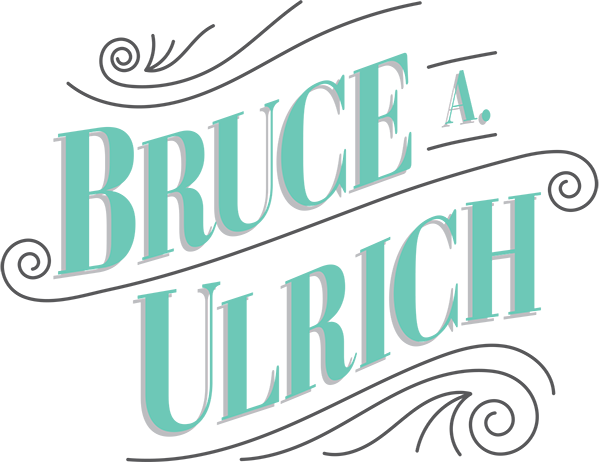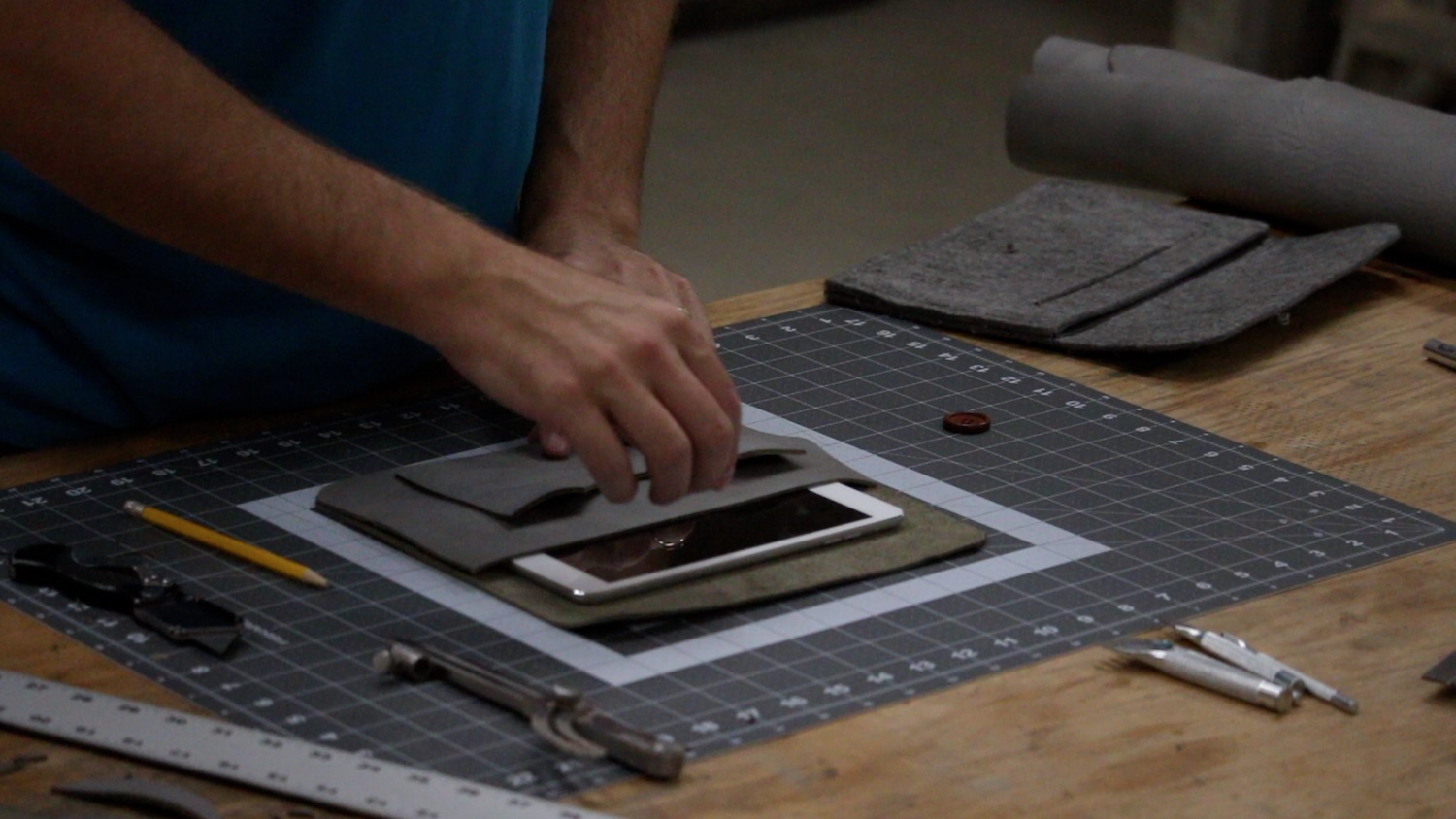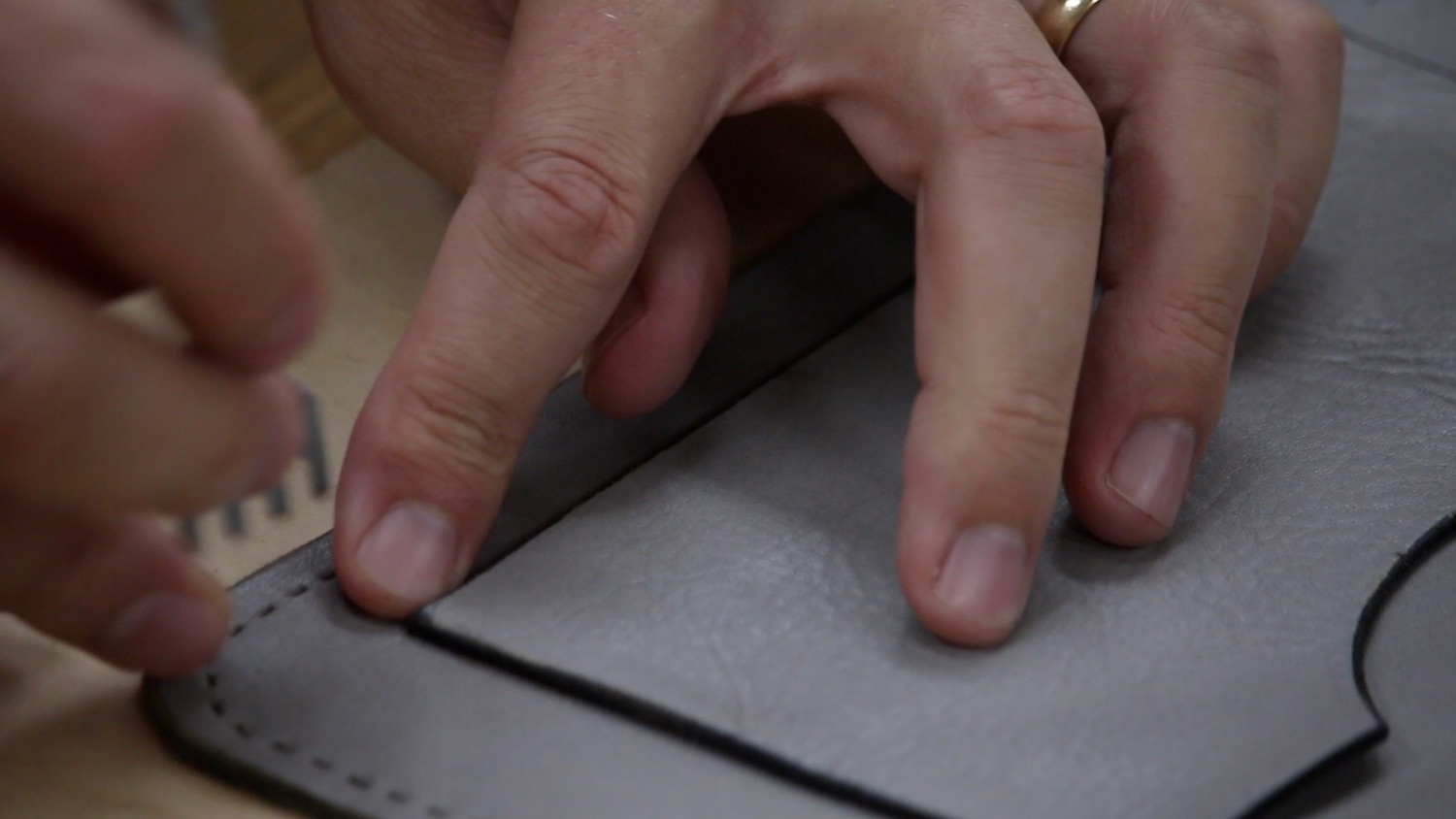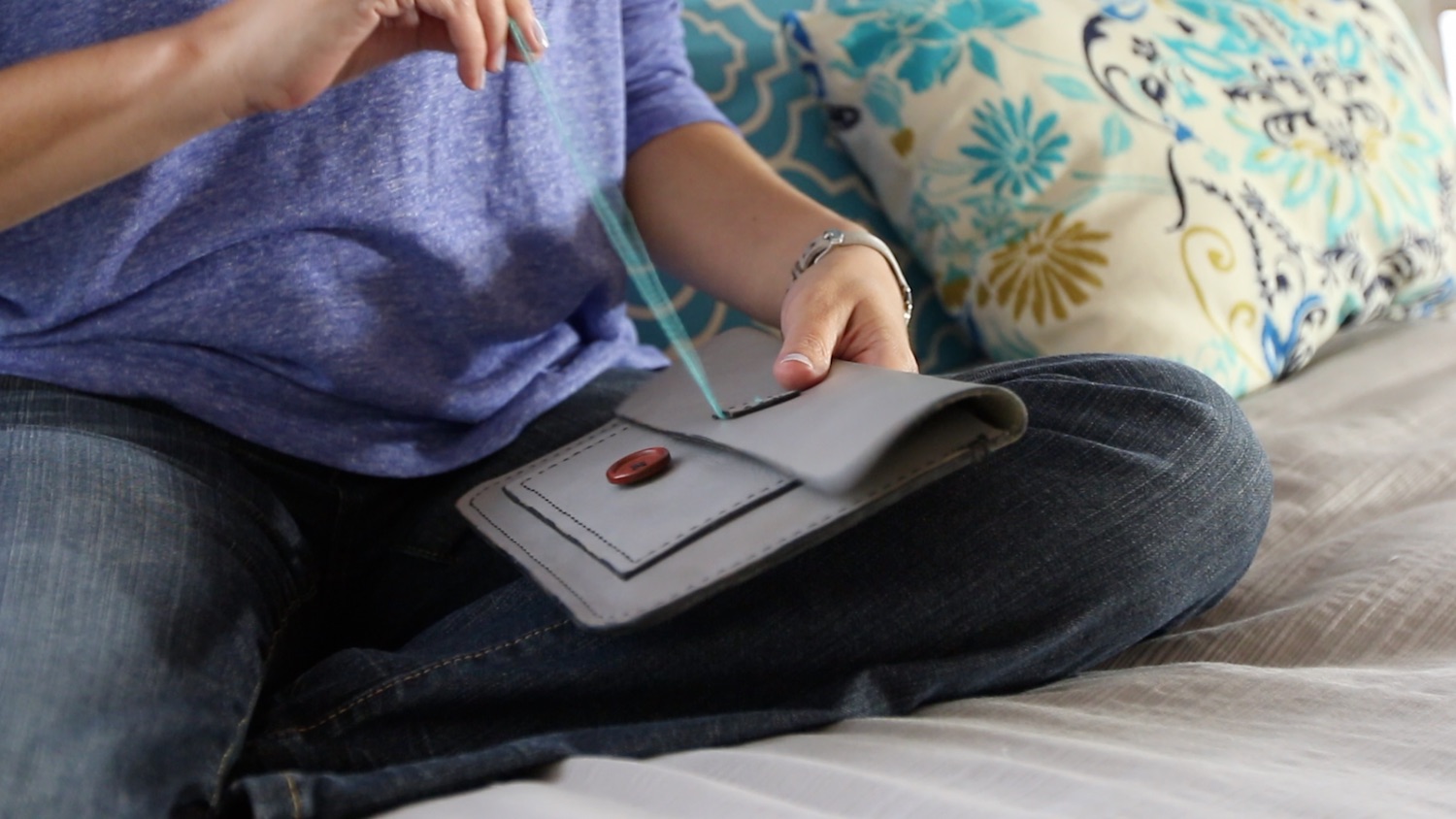How to Make A Leather iPad Case
VIDEO
I have wanted to get into leather working for quite a while now. I even bought a side of leather and some basic leather working tools last year. I just not got around to making my first ever leather project: an iPad mini case. Take a look at the video of how I made it:
BACKGROUND
My wife has an iPad mini that she used for work, and the case she has had for it has recently worn out. This was the perfect opportunity for me to try my hand at some leather working.
As I mentioned above, I've had the tools and leather for a while to get into this craft, but have just never taken the plunge. I don't know what the hold up was...maybe it just seemed too intimidating? It's like when I got the whole side of leather, I just didn't want to cut into it for fear I would mess it up? This happens a decent amount of the time to me with trying new things, and I bet I'm not the only one. (Leave me a comment below and let me know if you have the same things happen to you.)
The leather I had was a perfect match for this project though, especially since it was already gray. My wife loves the color gray, and her previous case was gray. It is only fitting that this one should be too.
TOOLS & MATERIALS
Utility knife - http://amzn.to/2zWyWJd
Waxed thread - http://amzn.to/2gII0Jc
Edge beveler - http://amzn.to/2gJO2cI
Leather chisels - http://amzn.to/2gRfUiQ
Leather needles - http://amzn.to/2icaify
Edge burnisher - http://amzn.to/2zetZOX
Leather - https://www.instagram.com/maverickleather/?hl=en
Edge kote - http://amzn.to/2icNP2b
Glycerin saddle soap - http://amzn.to/2gJpctl
Yarn or string of choice (I used 100% cotton yarn, 5 oz)
PVA glue or contact cement - http://amzn.to/2gJPrA0
STEPS
I started off by assessing the leather that I had. I ordered a side of leather (about 21 sq ft), and this particular side was already stained and finished with a gray color. The top also had kind of a waxy, polished finish. I didn't know any better. I know people have often mentioned that they use veg tanned leathers, but I didn't go that route.
The thickness for leather is measured in ounces. This particular leather was 4-5oz, so it was a nice thickness for what I was wanting to do. Come to find out, this leather would be too thick to make a wallet probably, because with a wallet, you typically put multiple pieces together to make the compartments. I think much thinner leather is typically used for that. This would be for bags, satchels, etc.
A couple of resources that I found to be good for ordering leather were as follows:
Maverick Leather - Their instagram account is very active, and you can often find specials there. This is where I ordered from, but I just called them because I had a few questions.
Acadia Leather - Another smaller shop that sells all kinds of leather. They are also pretty active on instagram.
Tandy Leather - This is a well known source for leather. They have pretty much anything available as far as leather and tools (many of the tools I have are from Tandy) and multiple locations across the US. I find their site a little hard to navigate, not knowing more about the different types and cuts of leather than I do.
I wanted to use the irregular edge of the leather I had for the flap on this iPad case, but all of the spots ended up just being too flimsy. They were thinner toward the edge, probably as a result of harvesting the leather.
I used a Sharpie to mark out the rough dimension of the pieces I needed. Remember, I'm using the previous iPad case as my template, so if you don't have something like this, you'll probably want to sketch out a template to use. Then, I used my straight edge to cut out the pieces. When I first started, my utility knife blade was not as sharp as it should have been, so it took more passes to get through the leather. It is typically the best practice to not try to cut all of the way through something like this with one pass. You have more of a chance of slipping and hurting yourself with the knife or messing up your cut. Just use moderate pressure on the knife and make a pass next to the ruler. Then, continue to do this until you've cut all of the way through. I noticed once I switched out the blade for a fresh one, I could do each cut in just about two passes, rather than more.
After the pieces were cut off of the large roll in rough dimension, I came back with the previous iPad case and used it as a template. I marked with a finer Sharpie the exact dimension of what I needed. Then, I cut those out. This just helps the pieces to be more manageable, rather than trying to cut such exact pieces out of a large roll of leather.
For the pocket on the front, I wanted a bit more detail, so I used a quart can I had lying around and put a curve in the front of the pocket piece. Then, I just cut along that curve with my knife.
I grabbed the iPad mini and tested it out, before I stitched anything together. I wanted to kind of see how it would look, and if the dimension were still good. They should be, since I used a previous case that fit this same iPad, but I just wanted to double check. Everything looked great!
Next, I started to glue the pieces together. I just used a clear, PVA glue that I've seen some people use with leather and book binding. It dries clear, so I like that part. The part I didn't like with using it on leather was that the leather was really hard after the glue dried.
To clamp the pieces together while the glue dried, I started off using these spring clamps. However, they proved to hold too tightly, and made some marks in the leather. After I saw that, I switched to using only the clothes pins. They hold just enough, and they don't leave marks on your work piece.
Then, I sanded the edges. Be sure when you do this to only go in one direction. I sanded in both directions, and it didn't work very well. I was not pleased with the result. It was just not as smooth as I would have liked.
I then used a No. 2 edge beveler to take the corners off of all of the edges on both sides. This leaves you with a nice, rounded edge.
I then used my edge burnishing tool to burnish the edges. However, this was the wrong order to do this in. I will explain the correct order a little later in the post.
I glued on the pocket piece next. I suppose some really experienced leather workers might not glue the pieces together before stitching, but I think it is a best practice to ensure that the pieces don't shift around while you are stitching.
WHOOPSIE!
Here's the point that I realized I had messed up. I should have punched my holes and stitched the pocket onto the front piece before gluing the main parts together. The way it was now, I could not get the needle through there to stitch it, so I had to rip the main pieces apart again. Man! That was hard to do since I had just spent all of this time gluing them together! Luckily, it didn't dod any damage to the pieces, so that was good. Just really think through your order of operations before you start gluing things together. I didn't plan ahead enough.
I used a large compass to mark where I needed to punch my holes. Some people will use a tool called dividers which do a very similar thing. I had a compass on hand, and I just used to scratch a tiny line that would guide me as I punched my lines. Don't try to just do this by eye, because your stitching will look very uneven.
Next, it was time to punch some holes. I used these "diamond chisels," and they seemed to work just fine. They are called that because they leave kind of a skewed hole in the leather that loosely resembles a diamond. I got the cheap set, so they're a little more like lines than diamonds, but like I said, they worked just fine. I was really surprised at how the leather closed back up after punching the holes. Some of the holes closed up enough that I had to kind of punch them out again.
Next, it was time to stitch. I don't have a stitching pony (thing that helps hold your work piece so you can use both hands), so I just put a couple of clamps together to work as a makeshift stitching pony. This worked ok, but the thread kept getting hung on parts of the clamps that stuck out, so it was not ideal.
What I'm doing is called a saddle stitch, where you actually put a needle on both ends of the same thread, and cross both through each of the holes from a different direction before moving on to the next hole. If you want to know more about saddle stitching and how to do it, I will leave some resources that I found to be valuable later in this post.
Once I reached the end, I stitched backward a few times to make sure it would hold well.
Next, I used a hammer to flatten the stitching I had just completed.
And then I could finally glue back on the piece I had to pull apart earlier.
And then, more stitching just like above for the outside, main part of the case.
For any of the threads, I burned them quickly with a lighter. They are nylon, so this seals the ends so they cannot come unraveled.
In the spirit of doing things out of order, I also applied this edge kote out of order. It should be one of the last things you do to the edge.
Then, I just modeled where the button would go on the iPad case and how it would close exactly. This took some figuring out, but it is better to do this ahead of time instead of rushing through it and putting holes in the wrong places.
I marked where the button needed to go, punched holes for it, and stitched the button on in a similar way as the other stitching I had done.
The way I decided to close the iPad case was using a button closure. I think the original case had two buttons that you could wind the string between in kind of figure eight pattern. However, I'm going to stitch the string into a small piece of leather, attach the leather to the upper flap of the case, and then just have the button on the lower part of the case where the string can be wound around it.
THE RIGHT ORDER
Remember how I told you earlier that I didn't do tings in the right order? Well, here is the proper order you should do things. And when I did this last piece in the right order, it worked very well. Here are the steps:
1. Cut your piece
2. Bevel the edge
3. Sand
4. Apply water
5. Apply saddle soap
6. Edge burnish
7. Apply edge kote
At this point, all I had left to do was glue the little piece containing the string back on, put in a few stitches and it was done! Oh, and I put a dab of glue on the end of the yarn since it was 100% cotton, since it could not be melted with a lighter like the nylon thread could.
CONCLUSION
I really like how it turned out. I just eyeballed the holes I punched for the final little piece, and I'm sorry that I did. It looks a lot more handmade than the other stitching, which is very precise. I wish that I would have used my compass to lay out these lines as well.
My wife is happy with the end result, and so am I. it works really well with the iPad mini and I think it looks great!
RESOURCES
There are a few resources that I found helpful as I researched for different ways to work with leather:
1. Ian Atkinson - he has YouTube channel that has a lot of good info
2. On the leatherworker.net forum, there is a ton of information. I found this pdf particularly useful: http://leatherworker.net/bob-park/FinishingEdges-2-15-11.pdf
3. The Red Smith - he has a YouTube channel that is really enjoyable to watch, and he does quite a few leather working projects there. Go check him out.
4. SimpleCove - This YouTube channel has a few leather working projects and Sean does a great job explaining things about what he is doing and why he does that particular thing.
Thanks for taking a look at this project, and let me know if you have any questions or comments!


















































